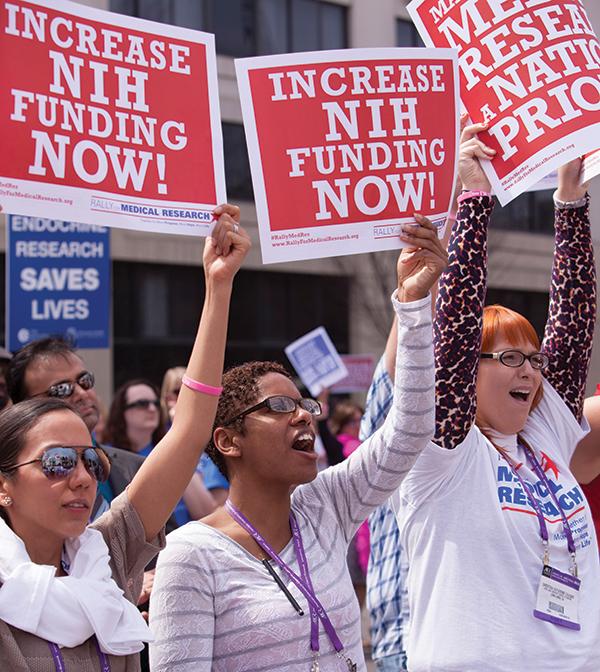In the vibrant city of Seattle, a confluence of intellect and advocacy emerged as researchers and politicians banded together to champion the cause of science in the face of proposed cuts by the Trump administration. This gathering, part of a broader national protest, served as a clarion call for defending scientific inquiry and funding, echoing sentiments shared across the country. Amidst the backdrop of towering skyscrapers and the innovative spirit that defines the Pacific Northwest, participants united not just to voice their concerns, but to articulate a vision for a future where science remains a cornerstone of policymaking. As they gathered to spotlight the crucial role of scientific research in addressing societal challenges, the event underscored the vital intersection of science, governance, and community engagement, setting the stage for a renewed dialogue about the value of investing in knowledge and discovery.
Rallying for Research: Uniting Voices Against Funding Cuts
In a stirring display of solidarity, researchers and politicians converged on the streets of Seattle, their voices rising in unison against proposed funding cuts that threaten the very fabric of scientific discovery. With signs reading “Science Matters” and “Protect Our Research”, participants from diverse backgrounds joined forces to express their commitment to preserving the integrity and continuity of scientific endeavors. This rally not only highlighted the importance of funding in advancing knowledge but also served as a vivid reminder of the collective responsibility to safeguard the future of research.
The atmosphere was charged with passion and purpose, as speakers shared personal stories that underscored the dire consequences of inadequate funding. Among the rallying cries, key messages emerged that resonated deeply with the audience:
- Innovation Requires Investment: A call to ensure that groundbreaking projects do not stagnate due to budget cuts.
- Public Health Depends on Research: A reminder that many medical breakthroughs are rooted in funded research initiatives.
- Education and Future Generations: An assertion that nurturing young scientists is vital for continued progress.
As attendees networked and shared ideas, discussions unfolded around potential strategies to advocate for sustained funding. Tables were set up to gather signatures for petitions and to strategize on lobbying efforts, illustrating a grassroots determination to mobilize the scientific community. The rally not only called upon government officials to reconsider their stance but also encouraged citizens to engage with elected representatives. Together, these voices united in the shared belief that a robust commitment to scientific research benefits not just a select few, but society as a whole.
| Key Issues | Impact of Cuts |
|---|---|
| Climate Research | Slowed progress on critical environmental solutions. |
| Medical Advancements | Delayed breakthroughs in treatments and health innovation. |
| Technology Development | Reduced capacity for innovation in tech-based industries. |
The Impact of Federal Budget Cuts on Scientific Advancement
The ramifications of federal budget cuts extend beyond the confines of government offices; they ripple through laboratories, universities, and entire research communities. As funding dwindles, projects reliant on federal grants face unprecedented challenges, forcing researchers to abandon innovative ideas. The resulting stagnation of scientific development threatens to echo across various fields, from environmental science to medical research, hindering the capacity to solve pressing global problems.
In the wake of these funding reductions, many researchers express fears about the long-term consequences for the United States’ position as a global leader in science and technology. They argue that the commitment to investing in knowledge generation not only paves the way for groundbreaking discoveries but also fuels economic growth. The frustration shared by scientists in Seattle reflects a broader sentiment felt nationwide, emphasizing the critical need for policy reform that prioritizes science in the public sphere.
| Field of Research | Estimated Funding Impact |
|---|---|
| Biomedical Science | 20% reduction in federal grants |
| Environmental Studies | 30% decrease in project funding |
| Technology Innovation | 15% less funding for new initiatives |
Advocates for scientific research emphasize the importance of public engagement and grassroots activism in reversing these cuts. Rallies, like the one seen recently in Seattle, demonstrate a pivotal moment for collaboration among scientists, students, and policymakers. By uniting voices across disciplines, the movement seeks to highlight how strategic federal investment in research is essential not only for immediate scientific advancements but also for long-term societal benefits including job creation and improved public health.
Strategies for Advocating Science Funding at the Local Level
Advocating for science funding at the local level is essential for fostering a robust research environment and ensuring that communities benefit from scientific advancements. Grassroots movements can be incredibly powerful, and individuals can mobilize support through community engagement. Organizing informational sessions and town hall meetings allows citizens to learn about the importance of local scientific endeavors, and provides a platform for researchers to share their work’s impact on public health, education, and the local economy.
Building strong partnerships with local organizations, educational institutions, and businesses can amplify advocacy efforts. Collaborations can lead to joint initiatives that highlight the significance of scientific funding. Consider the following strategies to strengthen these connections:
- Partner with local schools to create science fairs that showcase student projects.
- Engage local businesses in discussions about the economic benefits of research funding.
- Work with nonprofits focused on education and health to advocate for science grants.
Effective communication is key to rallying support for science funding. Utilize social media platforms to share compelling narratives and data that illustrate the benefits of investment in research. Creating a visually appealing infographic or a short video can help capture attention and make complex information more digestible. Below is a sample comparison table that illustrates the impact of various funding scenarios:
| Funding Level | Research Projects Supported | Community Benefits |
|---|---|---|
| Low ($1M) | 10 | Basic health studies |
| Medium ($5M) | 50 | Innovative community programs |
| High ($10M) | 100 | Advanced technology and solutions |
Bridging the Gap: Collaborations Between Researchers and Policymakers
In recent years, the urgency for effective dialogue between the scientific community and policymakers has become increasingly evident, particularly in the face of shifting political landscapes. Events like the recent rally in Seattle serve as a powerful reminder of the necessity for collaboration in the realm of public policy. Researchers and politicians united to voice concerns over federal budget cuts to scientific programs, emphasizing the vital role that funding plays in fostering innovation and safeguarding public health.
Collaborations create opportunities for mutual understanding and shared goals. By engaging in ongoing conversations, researchers can:
- Provide data-driven insights: Policymakers rely on empirical evidence to craft policies that stand up to scrutiny. Researchers offer the research community’s knowledge base to inform legislative decisions.
- Identify critical areas of research: Policymakers can highlight areas where societal needs intersect with scientific inquiry, directing focus to pressing challenges that demand urgent science-backed solutions.
- Promote science literacy: Researchers can assist policymakers in translating complex scientific concepts into legislation that is both comprehensible and actionable.
The synergy achieved through these collaborations not only strengthens the scientific framework within public policy but also cultivates informed advocacy. An ongoing partnership can be facilitated through structured platforms ensuring that researchers are not merely observers but active contributors in policy formation. For effective partnerships, both parties must prioritize continuous engagement and commitment to shared objectives—and ultimately foster an environment where science is not only present in policy discussions but is integral to the decision-making process.
To Conclude
As the sun sets over Seattle, the convergence of researchers, politicians, and passionate advocates for science stands as a testament to the city’s commitment to evidence-based decision-making. The recent rally, ignited by concerns over proposed cuts to scientific funding under the Trump administration, highlights the importance of robust support for research in fostering innovation and addressing global challenges.
In a landscape where the dialogue around science is ever-evolving, this gathering not only amplifies the voices of those who champion the pursuit of knowledge but also underscores the role of public engagement in shaping policy. The collective resolve demonstrated in Seattle serves as a reminder that, regardless of political climate, the pursuit of truth and discovery must remain a shared priority.
As we reflect on the impact of this national protest, let it inspire ongoing conversations and actions that advocate for the resilience of science. The road ahead may be fraught with challenges, but with continued advocacy and unity, the future of research—and the vital societal benefits it brings—can be preserved and empowered.
